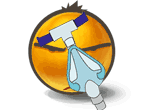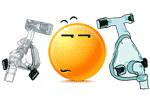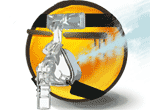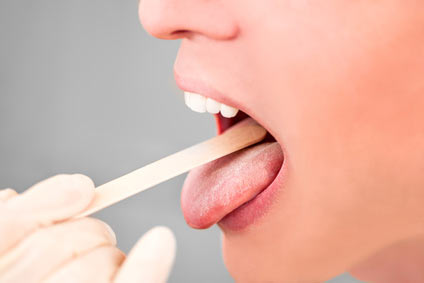CPAP Mask Uncomfortable?
How to fix problems with an uncomfortable cpap mask?
If you have your CPAP mask uncomfortable, remember that you are not alone. Almost anyone with CPAP treatment has been in this spot at some point.
In this article you will learn what to do if you're having a hard time falling asleep with CPAP or if you find your CPAP mask uncomfortable.
What Should You Know About CPAP Masks
Are you frustrated because you're having a hard time falling asleep with your CPAP mask? There are a couple of things you should know about masks before thinking of throwing them away:
CPAP masks are individual things
I don't believe many DME (Durable Medical Equipment - where you buy CPAP equipment) understand that masks are individual things: what works for one person doesn't work for the other one. Moreover, what's comfortable for some can be a torture for other people.
In other words, because of their individuality, you need to try several masks on, to see how they feel on your face.
But this is not enough! Try them out lying down and see if you feel the same comfort. Then connect the mask to a CPAP machine with your air pressure selected, and check again if you can breathe comfortable.
For more info about DME, see How to Choose a Durable Medical Equipment.
CPAP Masks Should Not Be Uncomfortable
Masks should not be painful when you wear them, they should fit and feel comfortable line an old good shoe.
There are plenty of types of CPAP masks on the market, hundreds of them. So when you go to your DME to try one on, put as much effort in mask fitting as you would do with finding comfortable shoes.
Therefore, check out plenty of masks and test each one by trying them on the same way you sleep: at your full prescribed pressure (connect the mask to your CPAP machine if possible), and remember to try them lying down on a bed.
For more info about how to select the best mask, see CPAP mask selection.
Finding a comfortable CPAP mask - a difficult journey for 90% of us
Keep in mind that CPAP therapy is a new type of behavior for your body and it really takes a lot of adjustment until you'll sleep comfortable. You won't feel better with your sleep apnea until you have good nights of sleep.
Your body doesn't like new stuff touch your face while sleeping. So you'll need some time to adjust. Some people start to feel comfortable with their CPAP mask after 1 week, but many of them after 4 or 6 months.
So please remember that it's not easy to adapt to a CPAP mask. While you are struggling to find the best CPAP mask and the right technique to use that mask, you will have some tough nights.
Fortunately, there are methods to improve the way you sleep with a mask, so please read further to learn how to get comfortable with CPAP.
It's Normal to Start Hating the CPAP
To be honest, if you said you love CPAP from the first night you started to sleep with it, I would be a little worried. Actually, none of us love or even like CPAPs from the beginning, but it's way better than the alternative - not waking up to a new morning.
There will be nights where you'll want to get comfortable in bed without CPAP, like a normal person. But it's not going to happen. Some people didn't wake up the next morning when CPAP wasn't used. You know what I mean...
You have to overcome your hatred of CPAP to get on with your sleep apnea treatment. To do this, first you have to change your way of thinking about breathing machines and accept that this is what you must do for yourself.
Then you need to find the best CPAP mask for your face. As I said before, you have to try a bunch of them until the right one is found.
Many of us have plenty of masks in their wardrobe gathered in our search for the perfect one, and each one has a different story to tell about fitting problems.
And I'll give an example of a CPAP user who tested 4 masks until he found the right one:
- Swift LT - the pillows rubbed and irritate the nose painfully,
- Mirage FX - the user liked the mask but because he is a mouth breather, he tried a chin strap but it got more uncomfortable.
- Quattro FX - moves around on his face.
- Mirage Quattro - the present mask which is the most comfortable for his face.
Stories from People Who Hate CPAP:
How to Make a CPAP Mask More Comfortable
The most important thing when you try to adjust your CPAP mask is to wear it every time you sleep, with no exceptions. If you're choosing to not use the CPAP every night, you are making your adjustment period even longer and more difficult than it needs to be.
And if you find your CPAP mask uncomfortable, you need to take care of every problem that you encounter while wearing the mask. No one can help you solve these problems.
Your doctor and the rest of us can only guess what's causing the problems and we can give you some ideas that may or may not help. But in order to fix the numerous problems that makes the CPAP mask uncomfortable, you have to take charge and resolve the issues alone.
So, how do you start resolving the issue with your CPAP mask?
Here are the steps:
Identify each problem that makes your CPAP mask uncomfortable
In order to solve your problems with your CPAP, you have to identify and describe each problem that affects your quality of sleep. You'll do this by keeping detailed notes.
Take these notes for 2 or 3 weeks while sleeping with your CPAP mask, and include in your notebook:
Basic Sleep Data:
Examples of sleep data to include in your notebook:
|
|
This sleep data can help you determine if the mask is causing you insomnia, or if you have a poor sleep hygiene that can be contributing to making it more difficult to adjust to sleeping with the CPAP.
CPAP Problems Encountered During Sleep
Take notes about CPAP problems that wake you up at night or that increase the discomfort while trying to sleep. Here are some examples of phrases you may use:
- "Woke up twice with gas problems and once with air escaping out of my mouth"
- "My forehead is hurting where the mask support piece goes"
- "I start sneezing after I put the CPAP mask on"
- "I feel like I'm suffocating when I try to breathe with CPAP mask"
Each and every one of these very real sensory phenomena can indicate what part of your therapy might need to be tweaked, and, just as important, how to tweak it.
For example, "I feel like I'm suffocating" combined with a long ramp starting at 4cm of pressure can usually be fixed by either turning off the ramp or increasing the initial ramp pressure, but "I can't seem to exhale fully while getting to sleep" may indicate that the ramp time is too short or the initial ramp pressure is too high or both.
Stories from People Who Have CPAP Problems:
Leaks and evidence of leaks
What to track in your notebook:
- Note how many times you wake up feeling an air leak and where the leak is coming from. For example: "I feel the mask is leaking into my eyes from the left side of my nose."
- Track how often you wake up with dry mouth. Example: "I woke up 4 times with a very dry mouth; painful to swallow." This phenomenon can indicate mouth breathing.
- Monitor how often you wake up with swollen, puffy or dry eyes, which can result from mask leaks.
- Chech the leak graphic from your CPAP machine (especially if you have a full data machine) and see if the leak line is flat or bumpy. If the leak bumps correspond with uncomfortable awakenings then you know you've got to fix the leaks because they affect the quality of your therapy.
Increased sensitivity
Take notes on every increased sensitivity caused by mask or hose issues, or from humidifier. Here are some examples of tracking notes:
- "I get tangled in the CPAP hose each time I move around in bed and this makes me more anxious and less able to fall asleep."
- "I'm waking up every time with nasal congestion."
- "I spend a lot of time in bed worrying about CPAP related issues. What if the power goes off and I sleep with the mask on? Will I die in sleep?"
- "I spend too much time trying to adjust the CPAP mask so I could sleep without leaks and nose irritation."
- "I have to sleep in strange positions to keep my mask from leaking."
- "The airflow from CPAP machine feels too dry and unbearable".
- "It bothers me every time I feel the CPAP hose touching my skin."
Anxiety problems
Some CPAP users find very difficult to sleep with something attached to their face that also blows air into their mouth or nose, so they need to train their mind to accept the mask.
So take notes about these sensations, which are really important to be fixed. Here is an example:
- "I get a feeling of suffocation every time I put the mask on".
- " I can't breathe normally when I feel air coming into my face."
Find more similar stories told by real people with anxiety problems:
Anger issues
It's difficult to fall asleep if you hate your CPAP machine. You may already be angry from receiving sleep apnea diagnosis. And now you need to tolerate the CPAP? It seems too much for you.
But if you don't learn to control your anger you will never be able to adjust to CPAP therapy.
Make a List of Everything You Hate About Your CPAP Mask
Make a list of all the things that you can't stand about your current mask. Some of the things are common for all the masks, but many of them have typical issues that you don't find in others.
If you try more masks (which you should), make separate lists for these masks. Insist on trying a new mask if you think it might help.
Check CPAP Data
Do you and your doctor check the CPAP data recorded after each sleep? If not, it's difficult to know how good or bad is your therapy.
CPAP data that demonstrates that your leaks are disappearing or your therapy is actually working can be a powerful motivation to keep on working on making CPAP therapy work.
If CPAP data demonstrates the therapy is not yet effective, then your doctor know what needs to be changed as per the information revealed by your machine.
Keep "Walking" with CPAP - My Advice:
I wish I could tell that there is a mask out there for you that will fit perfectly all the time, never leak or hurt and that sleeping position doesn’t matter. Wouldn’t that be great?
There ARE GREAT MASKS available for sleep apnea patients - YOU have to take responsibility for correct fit, adjustment and seating.
The hardest part is dealing with your own impatience and expectations. We already know that having sleep apnea sucks. But we have it. It's not going away.
Being compliant with CPAP takes effort, and suffering some discomfort. It is not easy. You have to do some "toughing it out." There is no way around it.
Consider the alternative: untreated sleep apnea results in not enjoying life, not being able to live up to your potential, sickness and early death. Surgery is painful, doesn't always work, can have bad side effects and isn't always a permanent fix even if it is initially successful.
CPAP is the best treatment, period. I think of it this way:
- If I were crippled, I would hate using a wheelchair, but my only option would be to have no mobility.
- If I had cancer, you would hate chemotherapy, but I would do it or die.
There are people that are much worse off than apnea sufferers, people who don't have the option to say "I can't stand this." They just have to make it work.
I try to think about the fact that I do have a good treatment available for my condition and all I have to do suffer some discomfort and it will work.
Some more great pages you might like:
- 4 things I wish I had known when I started CPAP therapy
- Chronic Fatigue Syndrome Symptoms
- CPAP Chin Strap for Mouth Breathers
- Full Face Mask for CPAP Treatment










